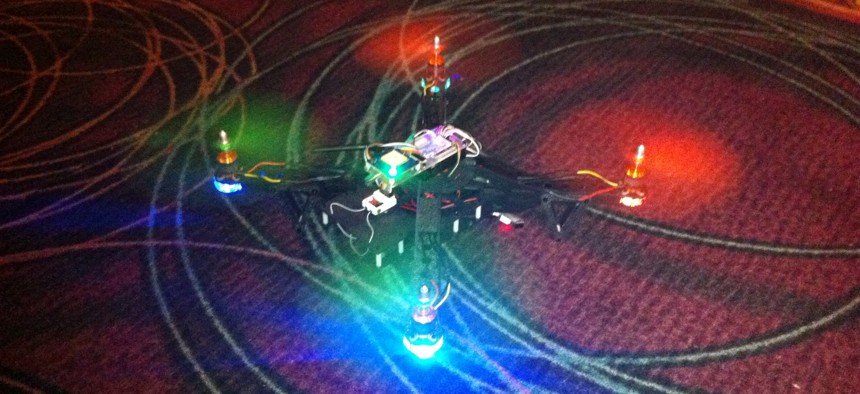
The Aerial Assault penetration testing drone on display at 2015's DEF CON in Las Vegas, Nev. Aerial Assault
Someone At DEF CON Made a Drone That Hacks Computers
You can buy it for $2,500 — and turn it into a flying malware injector.
LAS VEGAS, Nev. – Forget Facebook drones that broadcast Wifi. The future is drones that hack from above.
A company called Aerial Assault has turned a quadcopter into a flying hacker that scans the world below for insecure devices and vulnerable Wifi ports. Its makers say they built the tool for penetration testing — to help “good guys” diagnose their own weaknesses — but they concede that with a bit of modification, it could be used to exploit those vulnerabilities and install malware from the air.
The unnamed drone, which may be the first unmanned aerial penetration tool for sale to the public, was on display at the DEF CON hacker conference here last week. It uses a small Raspberry Pi computer running the Kali Linux penetration tester software with the broadcast range extended by alpha radio antennas. It will retail for $2,500 when the Web site goes up in a few days, its makers say.
“We’ve set it up so it does some basic [penetration] testing stuff and coordinates all that data with GPS coordinates from the flight controller. From that, you can extend it with every type of capability that you want Kali Linux to do,” said David Jordan, a representative from Aerial Assault who was selling it on the floor at the DEF CON conference in Las Vegas, Nevada on Sunday.
While the drone isn’t specifically designed to distribute malware, Jordan acknowledged it could be modified to do so. “It is up to the user to decide what they do with it. If the user, they have Raspberry Pi with Kali on it, they can reprogram custom scripts. That’s good for doing more extensive [penetration] testing. But, you know, scripts can be whatever they are,” he said. “Our intended use is for pentesters to be able to diagnose vulnerabilities and help people understand what their Wifi accessibility is, even up in the air.”
NEXT STORY: Hackers to Military: Replace Us With Robots? Ha!
